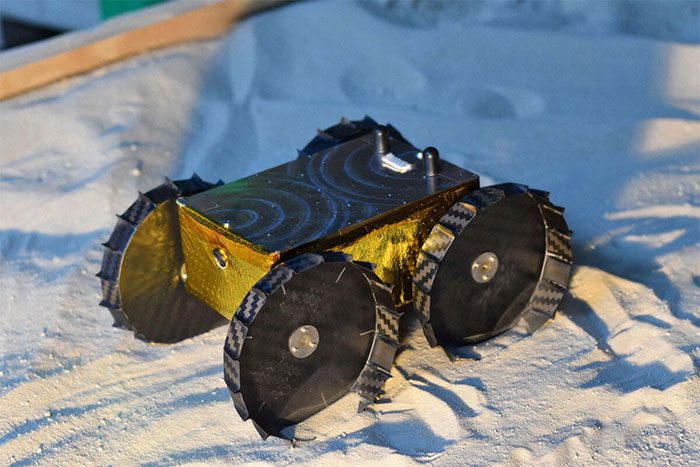Coming soon, a commercial spaceflight will send the autonomous robot Iris to explore the Moon. The robot is designed by 300 students from Carnegie Mellon University (USA).
So far, the United States is the first and only country to have sent humans to the Moon. However, the National Aeronautics and Space Administration (NASA) has been notably absent in the race to send robots to explore “Sister Hằng.”

Iris rover model at the Robotics Institute, Carnegie Mellon University – (Photo: Carnegie Mellon University)
The Soviet Union landed the first lunar exploration robots in the 1970s. Meanwhile, India attempted to send one in 2019 but was unsuccessful.
The only operational lunar rover is the Yutu-2 (Jade Rabbit 2) from China, which weighs 136 kg. It has been exploring the far side of the Moon for the past four years, sending back valuable data to Earth.
According to Bloomberg News, NASA will continue to be “outpaced,” this time by a team of students from Carnegie Mellon University (CMU). This team is set to launch the Iris autonomous robot to explore the Moon next May.
Raewyn Duvall, a 28-year-old PhD student at CMU, is the project lead for Iris. Nikolai Stefanov, a 22-year-old physics student, serves as the mission control director.
Approximately 300 CMU students have contributed to the creation of Iris. The robot is the size of a shoebox and weighs less than 2 kg. It will be the smallest and lightest autonomous robot to land on the Moon, and it is also the first robot made from carbon fiber instead of aluminum.
The students designed such a small exploration robot to ensure it can hitch a ride on a spacecraft.
Iris is equipped with a camera on the front and back. However, it has the advantage of being close to the lunar surface, allowing its camera to capture close-up images of lunar dust.
Iris has a battery life of about 50 hours. Once the battery is depleted, it will remain on the Moon.
Despite its limitations, Iris represents an undeniable advancement for the private space industry. It is considered the first autonomous robot not developed by a nation to land on the Moon.
Additionally, CMU is planning another autonomous robot also designed by students. This $5 million project, named MoonRanger, is funded by NASA. MoonRanger will be designed to travel to the Moon’s south pole in search of ice.
|
The entire Iris autonomous robot project has cost $800,000. CMU, along with private sponsors, partially funded the project, with contributions also coming from a crowdfunding campaign. A total of 900 students from the university participated. A text file listing the names of the contributors will be carried by the Iris robot to the Moon. |


















































